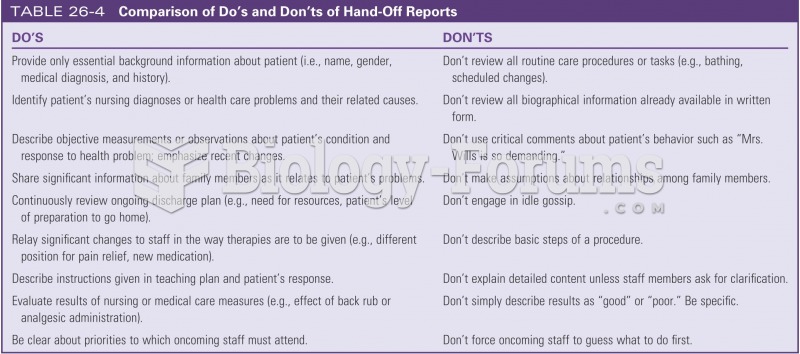Answer to Question 1
ANSWER:
Sensory neurons in the hand respond to the high temperature of the pot by carrying information back to the central nervous system. At rest, the interior of the sensory neuron is negatively charged relative to its exterior. If the neuron becomes depolarized (meaning that the difference between the electrical charge inside and outside the cell is decreasing) in response to sufficient input, it will reach a threshold that initiates a sequence of events producing an action potential. When threshold is reached, channels open allowing sodium ions to rush into the neurons axon. Because sodium ions carry a positive electrical charge, at the peak of the action potential the electrical charge has completely reversed itself from the resting state. The interior of the axon is now more positively charged than the outside. Near the peak of the action potential, channels that allow positively charged potassium ions to move across the membrane begin to open, and potassium begins to leave the cells axon. As the interior loses these positively charged potassium ions, the interior electrical charge heads in the negative direction again.
Action potentials do not affect the entire axon all at once. The process takes place first in a very small segment of the axon where the axon connects to the cell body. The next step is propagation, or the duplication of the electrical signal down the length of the axon until it reaches the axon terminal. Propagation in myelinated axons is faster and more efficient than propagation in unmyelinated axons.
Once the action potential reaches the axon terminal, the neuronal communication system switches from an electrical signaling system to a chemical signaling system. At the synapse, neurotransmitters are released across the synaptic gap and come into contact with special channels on the receiving neuron, referred to as receptors. The interaction between neurotransmitters and their receptors can have one of two effects on the receiving neuron: excitation or inhibition. When a neurotransmitter has an excitatory effect, it will slightly depolarize the receiving neuron, increasing the likelihood that the neuron will reach threshold and initiate an action potential, i.e., it will pass the message along. In contrast, when a neurotransmitter has an inhibitory effect, it will slightly hyperpolarize the receiving neuron, moving the cell farther from threshold and reducing the likelihood that it will initiate an action potential.
Following the production of an action potential, the neuron requires a time-out, or refractory period, during which it returns to its resting state. Excess sodium within the cell must be pumped out, and potassium outside the cell must be taken back up by the cell. During this refractory period, the cell is unable or unlikely to respond to further input by producing another action potential.
Answer to Question 2
ANSWER:
a







